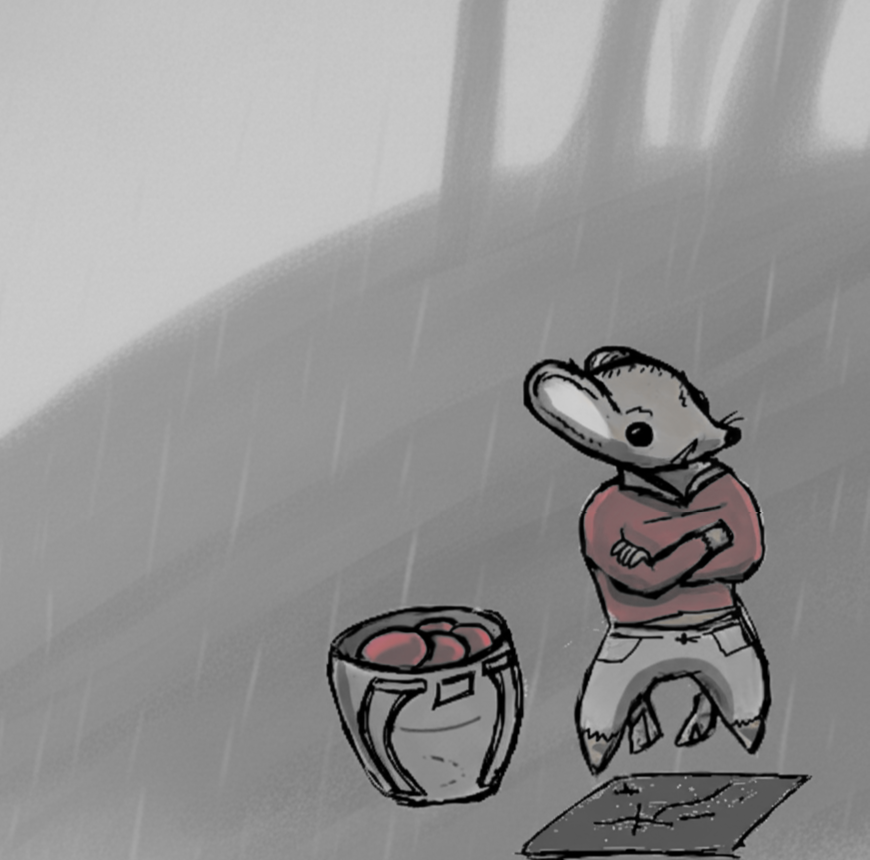In my last blog post, I introduced Mary Douglas’s culture theory of grid and group as a potential world-building tool, but I never really gave an example of how you might use it to not only create more convincing, coherent cultural worlds, but to clarify the sorts of conflicts and tensions that might naturally arise within each of Douglas’s four cultural types. However, like lots of others, I’ve been binge watching the Mandalorian, and I thought it actually provides a good example of how one of Douglas’s four cultures can be leveraged to create compelling narrative.
As a quick reminder, Douglas posits that societies, or social groups, can be parsimoniously described in two dimensions, which she calls grid and group, where group refers to a concern with group identity, in-group/out-group boundaries and solidarity, and grid refers to a concern with power, hierarchy, prestige and social control of representations, procedures; each of which, it is argued, can be “high” or “low”. As I wrote in my last post, my friend, the anthropologist John McCreery, helpfully summarized the four resulting cultural types like so:
(1) for Low Group, Low Grid, Colin Turnbull’s Ituri Pygmies and Frederick Barth’s Basseri nomads. In both individuals move freely from one egalitarian group to another. Ritual is unimportant.
(2) for Low Group, High Grid, Melanesian “Big-man” societies like Malinowski’s Trobriand Argonauts of the Western Pacific. Taboos related to food, sex, etc., are weak but huge effort is devoted to competitive display.
(3) for High Group, Low Grid, Douglas chooses the Israeli kibbutz, ostensibly egalitarian but keeping kosher and maintaining strong group boundaries.
(4) in the High Group, High Grid quadrant, we find the baroque elaboration of ritual associated with traditional civilizations in the Middle East, China, India, where both strong boundaries and competitive displays are prominent features of society.
This is the Way
The Mandalorians (by whom I specifically mean the bad-ass beskar-armored religious zealots otherwise known as the Tribe, or the Children of the Watch, followers of the Way of Mandalore, as depicted in the Disney+ show, The Mandalorian) are in almost every way archetypal for the Low-Grid/High-Group cultural type. The Mandalorians are obsessed with maintaining a specific set of boundaries that distinguish the who is, and who is not, a Mandalorian, most notably by wearing distinctive clothing (that is, armor) that marks them firstly as Mandalorians; in particular, these Mandalorians observe a strict taboo against showing their face to anyone, even during meal-times. When Din Djarin breaks that taboo, he is declared an apostate and no longer a Mandalorian, only becoming Mandalorian again after performing an act of faith and renewal of obedience by bathing in the Living Waters on Mandalore.
However, among the Mandalorians, there are few status differences or social hierarchies differentiating one Mandalorian from another. The Mandalorian Creed emphasizes solidarity and mutual aid, and one Mandalorian lives much as any other. They live communally, sharing all things except their most personal belongings (most notably their armor and weapons). The only hint of a hierarchy is the enigmatic Armorer, but what authority the Armorer holds is an earned status, not ascribed, for the Armorer is the sage or cleric that remembers their traditions, and re-distributes their most precious or holy possession, the metal beskar, by forging pieces of armor from the beskar for the Mandalorians to wear.
This cultural backdrop is nicely exploited by the writers of The Mandalorian to create moments of tension, tenderness, vulnerability, and even comedy. The character of Djarin, as a bounty hunter, but also as the caretaker of a foundling that he is trying to return to its people, does not have the comfort of living in the culturally safe confines of his people’s colony; instead, he is a stranger in strange lands, where his adherence to his identity is both a source of his strength and resolve, but also the source of conflict and pain. It is not only that his difference makes him a target, and that the taboo against his removing of his helmet prevents him from being less conspicuously different, but his experiences cause him to question the mythological foundations that justify the tenets of his cultural identity. When he reveals his face to Grogu at the end of season 2, an act that threatens his future identity as a Mandalorian, it is done as an act of love and compassion for the foundling that was in his care (and not co-incidentally, his adoption of the foundling is itself is a fulfillment of The Way of Mandalore).
The conflict between Vizsla and Djarin, which threatened to disrupt the solidarity of the Tribe also provides a point of interest, particularly as the resolution of that conflict involved an act of solidarity with Djarin that threatened the Mandalorian colony or covert, as revealed in these words spokent between Vizsla and Djarin:
“Get out of here! We’ll hold them off!“
https://starwars.fandom.com/wiki/Paz_Vizsla#Resettlement
“You’re going to have to relocate the covert.“
“This is the Way.“
“This is the Way.“
I said comedy earlier, and now I’m at a loss to find an example of what I mean from the Mandalorian. But rather than remove that word, I’d like to point to the comedic potential of PCs, or NPCs, going to great lengths to avoid breaking taboos of one sort or another. So feel free to dress up Mr. Bean as a Mandalorian, caught outside of his hotel room without his helmet on.


